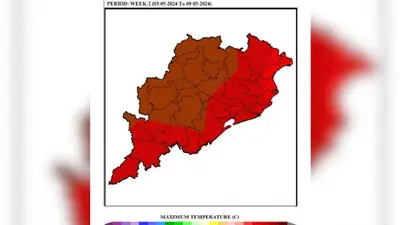Recommended Stories
"This quake, tsunami and the nuclear accident are the biggest crises for Japan" in decades, Prime Minister Naoto Kan told Parliament, more than two weeks after the natural calamity struck the country`s northeast leaving over 28,000 people dead or unaccounted for.
The situation at the troubled nuclear plant "continues to be unpredictable," he said, adding the government "will tackle the problem while in a state of maximum alert."
The Prime Minister said that he was seeking advice on whether to extend the 20-km evacuation zone around the plant.
He also said that it is "highly likely" that the six-reactor Fukushima plant will eventually be decommissioned.
Separately, Chief Cabinet Secretary Yukio Edano told a news conference that the situation at the plant is "very serious" and suggests "a certain degree of melting of fuel rods", as he expressed deep concern over detection of plutonium in the soil of the crippled facility.
The plant`s operator Tokyo Electric Power Company (TEPCO), which yesterday announced the detection of plutonium, said the confirmed amount of the radioactive material in the soil does not pose a major risk to human health.
It said the plutonium is believed to have been discharged from nuclear fuel at the plant and pledged that it would strengthen monitoring of the environment in and around the nuclear plant.
Sakae Muto, Vice President of the utility company, was quoted as saying by Kyodo news agency that it is "not easy to examine how far it (the plutonium) has reached."
Plutonium is more toxic than other radioactive substances such as iodine and cesium and increases the risk of cancer if absorbed by human bodies.
High levels of radiation exceeding 1,000 millisieverts per hour has also been detected in water in a trench outside the No.2 reactor`s building at the nuclear plant, with the contaminated water suspected to have come from the reactor`s core where fuel rods have partially melted, authorities said.
At a radiation level of 1,000 millisieverts per hour, people could suffer a drop in the count of lymphocytes -- a type of white blood cell -- in just 30 minutes, and half could die within 30 days if they remained in such a condition for four hours.
The high radiation level in water in the trench connected to the No.2 complex was detected on Sunday. The radiation level in the air in the trench stood at 100 to 300 millisieverts.
In the basement of the No.2 reactor`s turbine building also, water containing radioactive substances 100,000 times higher than usual was found earlier.
Hidehiko Nishiyama, a spokesman for Japan`s Nuclear and Industrial Safety Agency, said the temperature of the No.1 reactor`s vessel has been rising to more than 320 C, prompting TEPCO to increase the freshwater injected into the unit to cool it down.
However, the agency said the radioactive water has not been confirmed to have spread to the Pacific from seaside underground trenches at the plant.
The water levels in the trenches, some 55 to 70 metres away from the shore, have been stable and TEPCO has taken measures to stop the water from flowing out -- such as putting up sandbags and concrete blocks around the shaft, it said.
TEPCO said water in the trenches is believed to have come both from the reactor`s buildings and tsunami waves, which followed the massive magnitude 9.0 earthquake of March 11.
The plant`s operator continued to pump out radiation-emitting water that has been soaking the basement of the turbine building near the No.1 reactor to a tank.
Workers also restored lighting in a control room for the No.4 unit, the last of the six reactor control rooms to have the electricity restored.
Chief Cabinet Secretary Edano also admitted difficulties in balancing the two tasks -- the coolant water injection and removal of leaked radioactive water. The radioactive water leak may be linked to operations to pour tonnes of water to prevent reactors and spent nuclear fuel pools from overheating, Kyodo said.
"We cannot help but put priority on work to stop the nuclear reactors from boiling dry," Edano said. Serious damage to fuel rods from overheating would lead to the emission of enormous amounts of radioactive materials into the air.
The nuclear safety agency also said high concentration of radioactive materials such as iodine was detected in seawater near the plant over the weekend, but it has since decreased.
Meanwhile, the national broadcaster NHK said that no major progress has been reported in efforts to drain radioactive water filling the basements of turbine buildings near three reactors in the damaged Fukushima plant. The delay is hampering work to cool down and stabilise the plant.
At the No.1 reactor, workers have been pumping out contaminated water that filled the turbine condenser. Though TEPCO said the water level inside the device has dropped, it cannot say exactly by how much.
TEPCO plans to drain the basements of No.2 and 3 units and transfer the leaked water into condensers of the reactors.
But the condensers are already full of water, which will first have to be moved to other tanks in the system, NHK said.
Machines and equipment to restore automatic cooling systems for the reactors are installed inside the turbine buildings. But the delay in draining contaminated water is blocking restoration.
National Strategy Minister Koichiro Gemba, meanwhile, said the government could consider temporarily nationalising TEPCO.
Shares in the company dropped to their lowest level in three decades yesterday.












